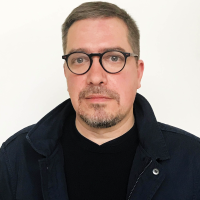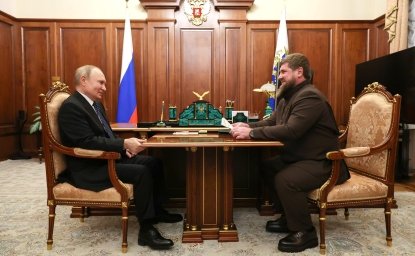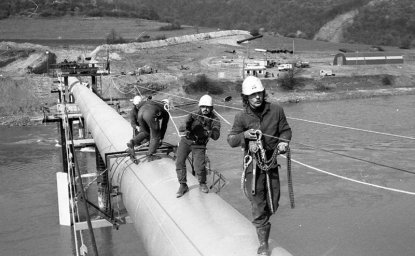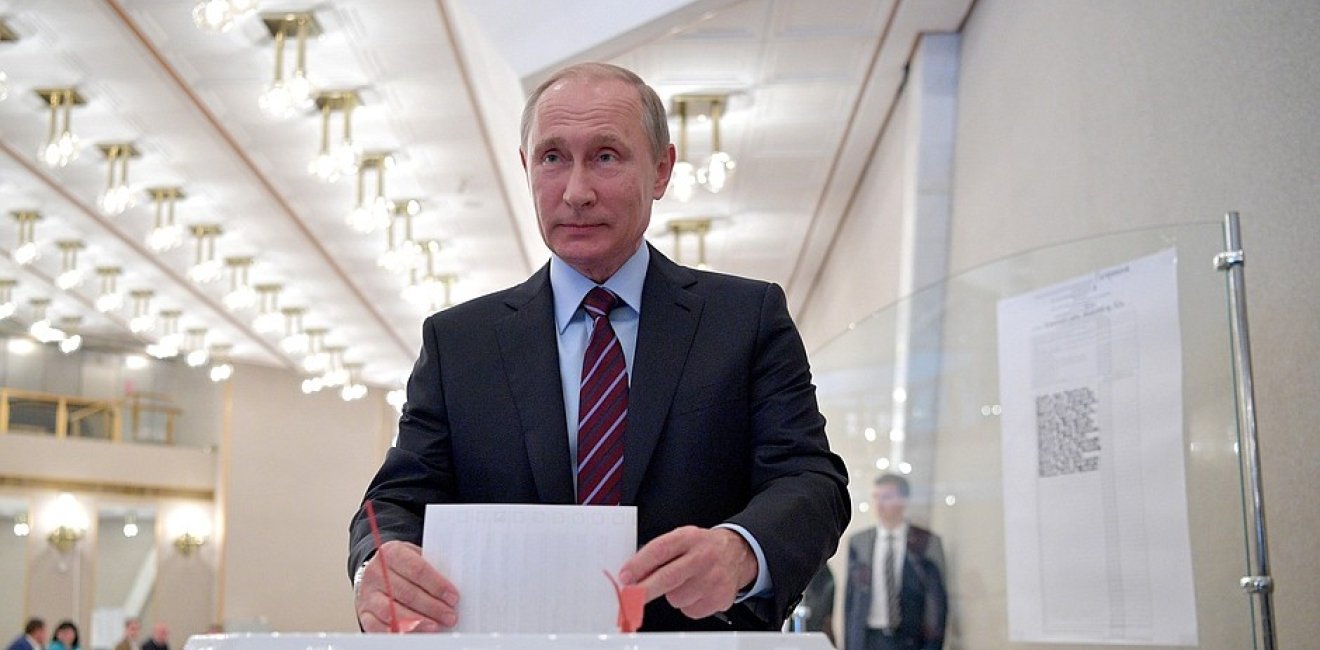
A blog of the Kennan Institute
A lot of soul-searching is due for everyone in Russia whose politics differs from the creed officially endorsed by the Kremlin. The closest second in last weekend’s presidential election took 12 percent of the vote, while the incumbent, Vladimir Putin, carried 77 percent. By the time Putin’s new term ends in 2024, he will have been in power for 25 years (Dmitry Medvedev’s 2008–2012 tenure was essentially a Putin regency).
Almost 68 percent of the electorate turned out to cast a ballot. Fifty-six million voted for Putin, which was more than at any election for any presidential candidate—that is, more than for Boris Yeltsin or Dmitry Medvedev—television anchors and commentators triumphantly emphasized. The Putin of 2018 essentially ran against the Putin of 2012, 2004, and 2000. The 2018 version crushed all the previous incarnations.
Still, there is room for improvement—that is, an authoritarian improvement. After all, 56 million votes is just half of Russia’s registered 109 million voters. “The result was typical or a bit lower than in most authoritarian regimes. Similar regimes would mobilize turnouts exceeding 80 percent. Russia’s system is still a work in progress and if the present tendencies persist, the regime would not have any problems with the turnout come next election,” the political scientist Grigory Golosov told the newspaper Vedomosti.
“Administrative mobilization,” or pressure applied through government structures, state-run media, the army, and state-owned companies to maximize the turnout, was reported as this election’s most common way of influencing the results. In Moscow alone, 39 constituencies had a turnout of 100 percent. Those were mostly hospitals, maternity wards, and prisons. Some of the Russian regions, especially the usual suspects, such as the Caucasian republics of Dagestan, Chechnya, and Kabardino Balkaria, got out the vote big-time, too: both the turnout and the vote for Putin exceeded 90 percent.
Some ballot-stuffing and instances of multiple voting were detected, but none of this was critical to the final result. According to independent monitors, the numbers provided by Russia’s electoral officials could actually be more trustworthy this time than in previous election years. “Although some irregularities were clearly present, direct falsifications during this vote were less pronounced than previously,” Grigory Melkonyants, co-chair of the independent elections monitor Golos, told the BBC. “Still we will only get a full picture of the violations later,” Melkonyants added.
The mathematician Sergey Shpilkin said the level of falsification during the 2018 presidential election was low. Well, relatively low. “Only up to 8 million votes were possibly added to the final count of the turnout,” Shiplkin told Vedomosti. Shpilkin became famous during the 2011 parliamentary election when his statistical analysis demonstrated massive irregularities in the officially published results. The opposition figure Alexei Navalny said the official turnout was inflated by ten percentage points.
More important battles lie ahead. One of them concerns the space for political debate and action outside the boundaries defined by the Kremlin. Through years of tinkering with electoral rules and aggressive media campaigning, the field has long been prepared for an easy Putin win. But Russian society is far more complex than the outcome of the election would suggest. Still, the Kremlin, looking at its triumphant results, will treat Russia as if it indeed consisted of 77 percent Putinists, 12 percent communists, and some 2 to 3 percent supporters of liberal values.
Ksenia Sobchak’s campaign has been helpful in achieving this. The Kremlin-scripted message her campaign was sending was as follows: Sobchak represents a legitimate constituency, but it is a tiny one. “I know that we are going to be a minority during this election, but let it be the smartest and the best-educated minority,” Sobchak was quoted by the state-owned RIA news agency as saying.
The Kremlin will now have a legitimate reason to act as if only a tiny minority of Russians support the rule of law, freedom of speech, and freedom of assembly. It is classic Russian politics: to create a phenomenon artificially and then treat it as if it were real and objective. The Kremlin’s response to any grassroots action is often to drown it with similar-sounding activity. There is no reason whatsoever why the Kremlin would stop turning real things into engineered social artifacts.
But Putin will have to fight a battle of his own, too. Officially, he is now embarking on his last term as president, as the Russian Constitution will not allow him to stand for reelection. Putin is entering lame-duck territory, a situation he will try to avoid at all costs. Russia does not have a clear succession mechanism, which creates an underlying tension. Powerful forces could get out of control unless Putin comes up with a succession plan or a new political system that allows him to remain as supreme leader supervising an elected president. The next six years are not going to be slow or sleepy. We will see a lot of action, including possibly a constitutional reform.
The surface is calm though. Last Sunday, a new step was taken toward making Putin’s rule one of the longest in Russia’s history. Putin has already surpassed Leonid Brezhnev, the Communist Party boss who ruled for 18 years between 1964 and 1982, for longevity in office. Russia’s rulers who served longer terms were the Empress Catherine (33 years), Czar Mikhail (32 years), Czar Alexis (31 years), Czar Nicholas I (30 years), and Joseph Stalin, whose exact term is hard to define, but who was at the helm of the Soviet Union for at least 25 years.
The paradox here is that all Russian leaders have aspired to be masters of time, mostly by foot-dragging, while no Russian reign has ever had defined terms. Very few Russian leaders have had any control over the end of their rule. Their days in power have been limited only by death or by their inner circle’s desire to replace them.
Author

Editor-at-Large, Meduza

Kennan Institute
After more than 50 years as a vital part of the Wilson Center legacy, the Kennan Institute has become an independent think tank. You can find the current website for the Kennan Institute at kennaninstitute.org. Please look for future announcements about partnership activities between the Wilson Center and the Kennan Institute at Wilson Center Press Room. The Kennan Institute is the premier US center for advanced research on Eurasia and the oldest and largest regional program at the Woodrow Wilson International Center for Scholars. The Kennan Institute is committed to improving American understanding of Russia, Ukraine, Central Asia, the South Caucasus, and the surrounding region through research and exchange. Read more

Explore More in The Russia File
Browse The Russia File
Chechnya as a Model of Modern Russia

Russia’s Indigenous Communities and the War in Ukraine

Gas and Power in a Changing US–Russia Relationship

